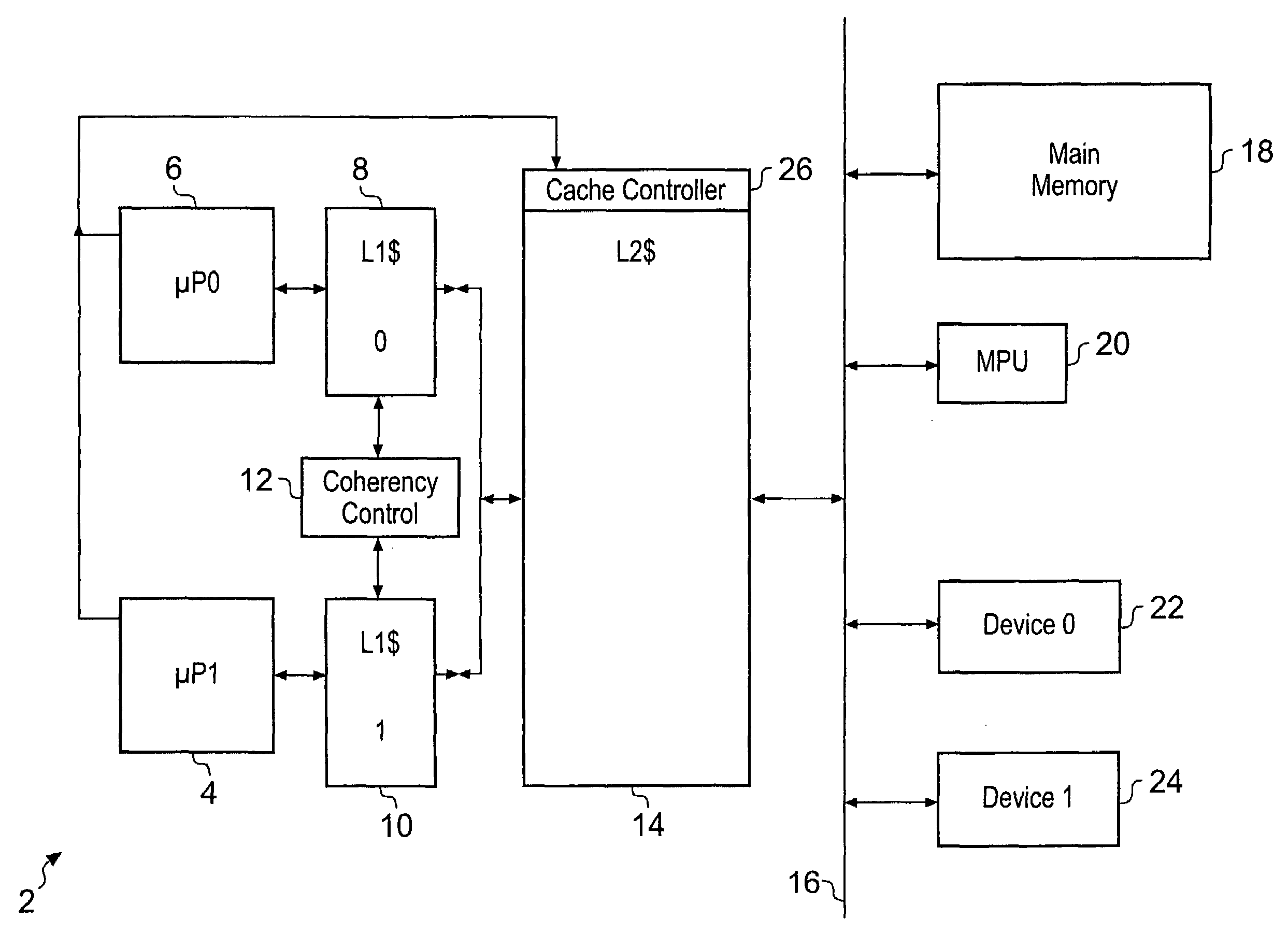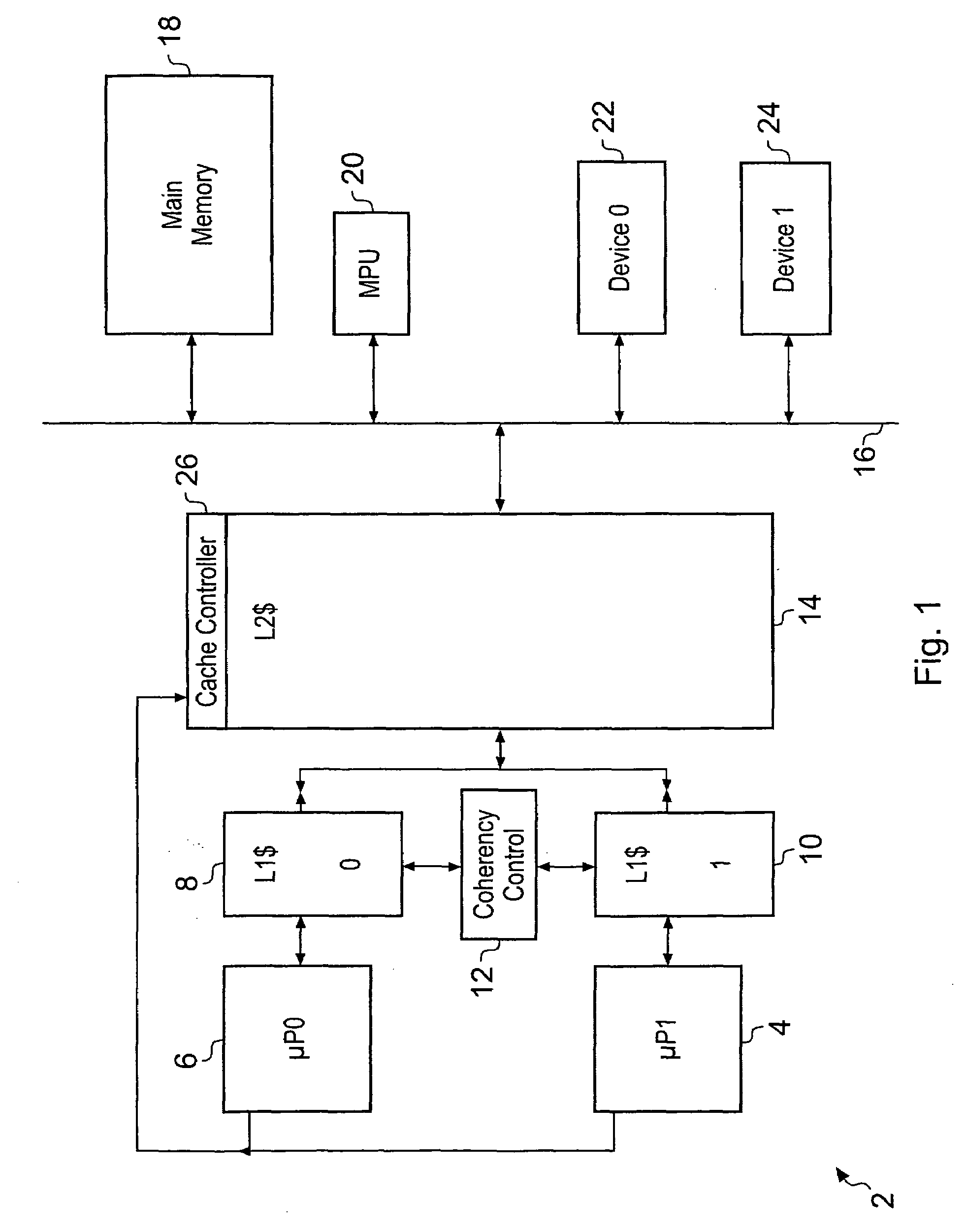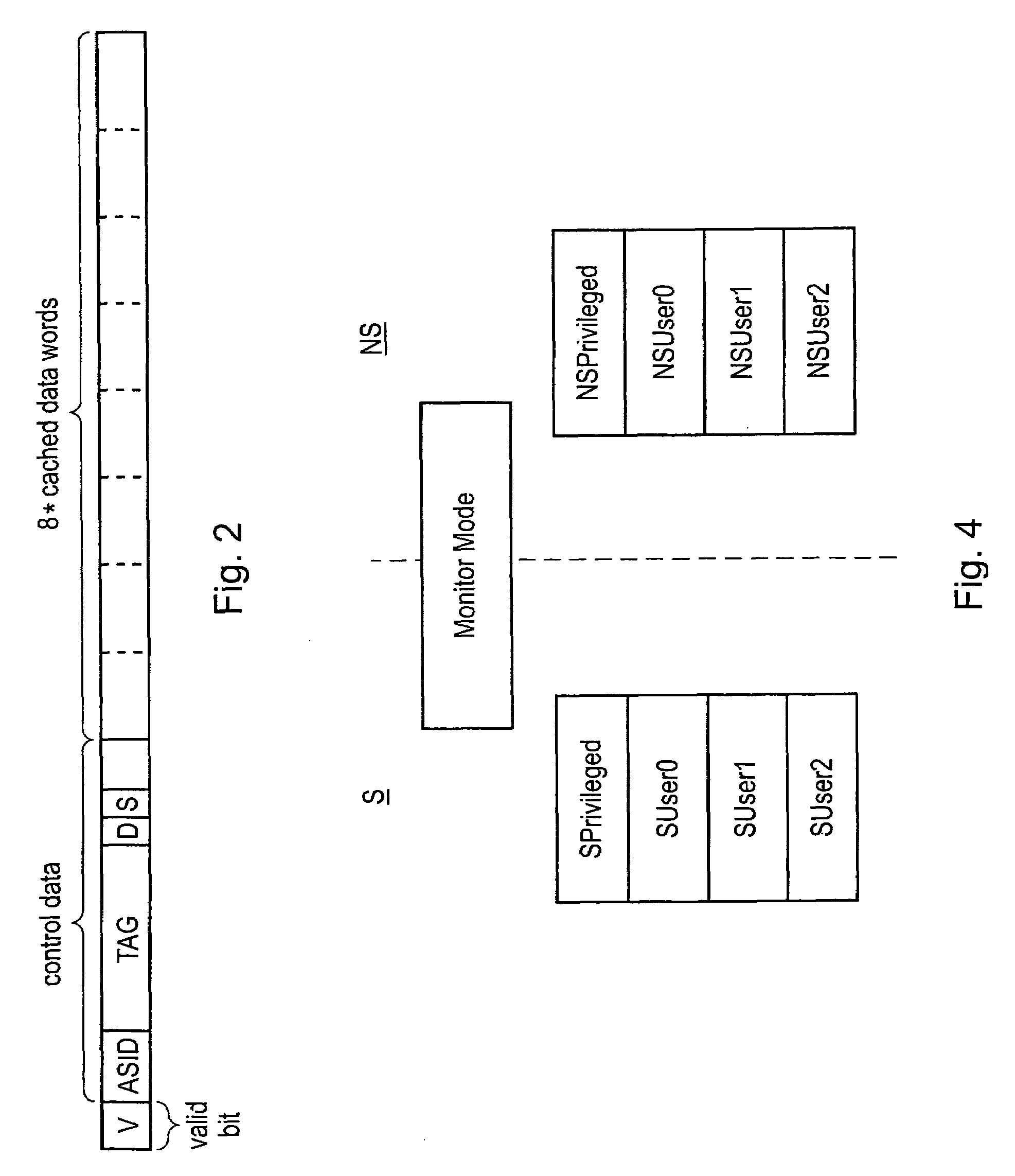[0009]The present techniques recognise that in at least some circumstances it is possible to avoid cache flushing and cache reloading operations, i.e. maintaining the cache data as valid, by modifying control data associated with that cached data within the cache memory rather than flushing the data and then reloading the data with its new control data. As an example, if a large block of data values is being processed by a particular
program thread and the cache memory includes control data which permits access by that particular
program thread but not other program threads and it is desired to provide access to that data to another
program thread, then the
standard technique would be to flush the data from the cache and then reload that data with the new control data appropriate to provide access to the new program thread. However, the present technique recognises that program instructions executed by the processor may be used to directly modify the control data within the cache memory so as to permit access by the new program thread and thereby avoid flushing and reloading with its associated speed and
power consumption penalties.
[0011]Another example of control data which may be modified arises in a
system in which the processors have a plurality of access states (e.g. security
modes) associated therewith and only certain of these states permit access to controlled regions of memory. The control data within the cache memory can specify the access states which must be current for a processor in order for it to be able to access the cache data concerned. In this context, it may be desired to
restrict access to a given access state of a processor for one period of time and then to open up the access to a different access state, possibly with a different processor, at a later time. The present technique permits program instructions executing on at least one of the processors to modify the
access control data to permit such changes at the level of the cache memory without requiring cache flushing and cache reloading. Such an arrangement may, for example, be conveniently used within a
system having multiple processors with the access data specifying the identity (e.g. number) of the processor or processors permitted to access particular portions of the cache data. This control data can be dynamically modified without having to flush and reload the cache data, i.e. maintaining the validity of the data over such a modification.
[0012]The present technique is particularly useful when at least one of the processors has a
secure state and a non-
secure state with the control data being used to
restrict access to cache data cached from secure regions of memory to only processors operating in the
secure state. In accordance with the present technique, a processor executing in the secure state may be permitted to execute program instructions changing the control data specifying that only processors in the secure state may access certain cache data thereby opening up access to that data to processors executing in a non-secure state. This type of behaviour is particularly useful in fields such as
digital rights management where large volumes of data may need to be manipulated both in a secure state and a non-secure state with the present technique providing a way of reducing the amount of cache flushing and cache reloading which might otherwise be required.
[0014]The present technique may be used with good
advantage within systems employing
memory protection units which are programmable by at least one of the processors so as to specify which regions of the memory are secure and which regions are non-secure. The processor in such a system is already devolved control over security and accordingly can be trusted to make appropriate modifications to the control data within the cache memory in accordance with the present technique.
[0015]It will be appreciated by those in this technical field that there is often provided a hierarchy of cache memories within a
data processing system. This is particularly the case within systems including more than one processors. It is common for a processor to have a small level-1 cache memory and access to a larger level-2 cache memory. Whilst the present technique can be employed in relation to either or both of these memories, the
control complexity associated with applying the technique for multiple levels of cache memory within a cache
memory hierarchy is high, e.g. to avoid race conditions between modifications to control data being performed for coherency at the various levels within the hierarchy. Accordingly, it is practical to
restrict use of the present technique to one level within the
cache hierarchy. In this context, a larger benefit is achieved by applying the present technique at the level-2 cache memory since this is typically larger and accordingly avoiding the need to flush and reload larger volumes of data associated with the level-2 cache memory is more advantageous compared to the smaller volumes of data typically associated with level-1 cache memories.
[0017]It may also be advantageous to avoid potential
aliasing problems within the cache memory when a change in control data is made by adapting the cache memory to respond to program instructions for changing the control data to additionally identify cache lines which will
alias with the new cache data with its modified control data and flush those
aliasing cache lines from the cache memory.
 Login to View More
Login to View More  Login to View More
Login to View More 


